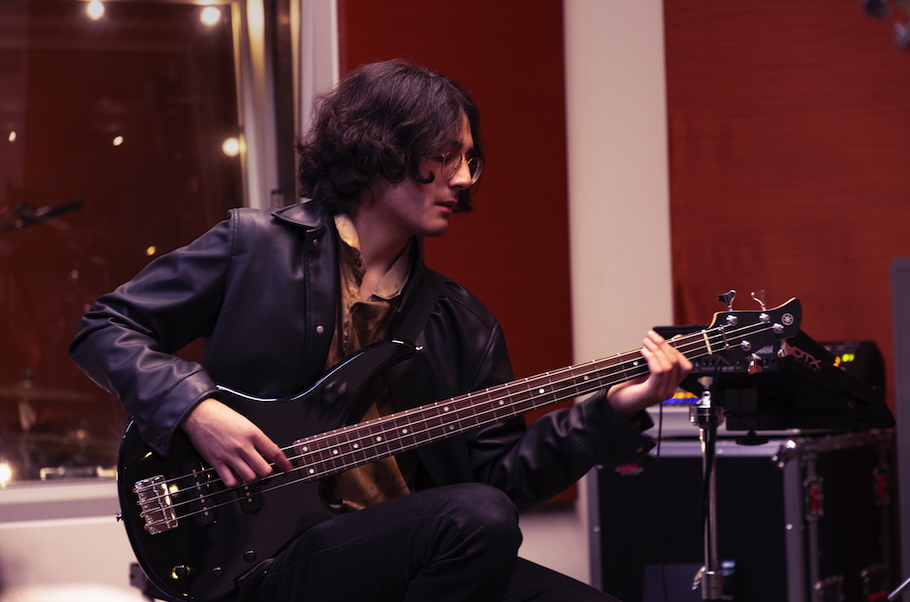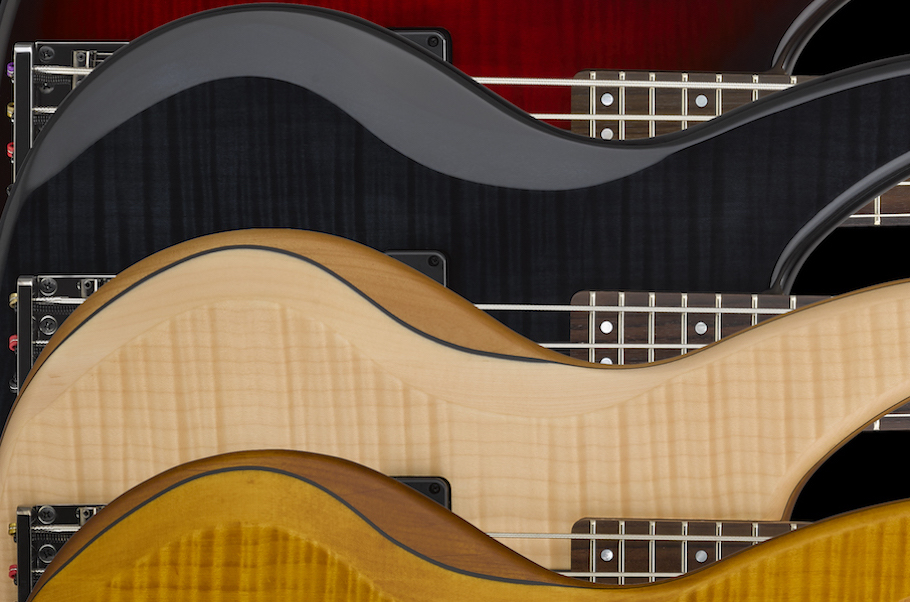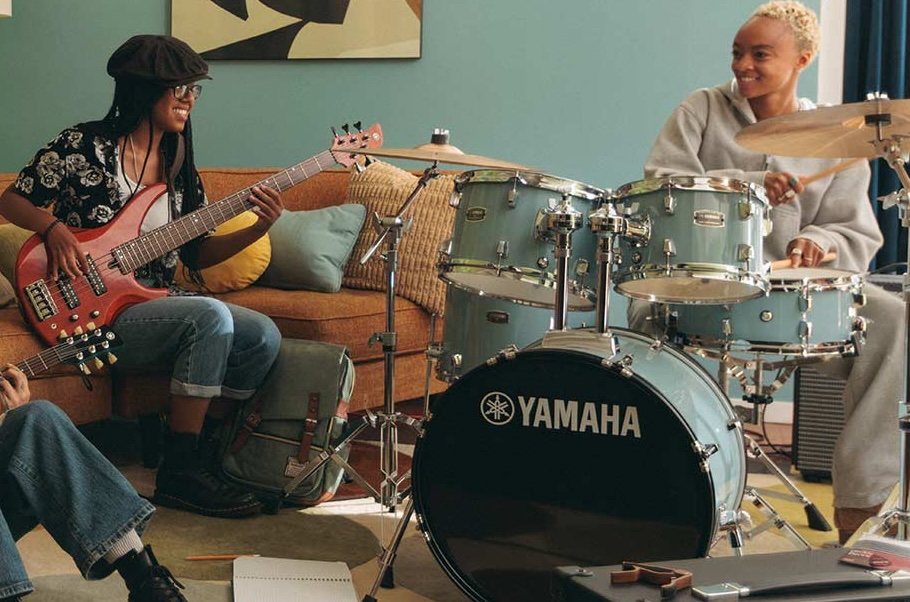A Bassist’s Guide to Playing Jazz, Part 1
Tips for mastering this challenging genre.
Imagine that you are moving to a new country and want to learn the language. You might watch videos to absorb the country’s history, culture and current events or take a course that connects you with other students. With regular practice and guidance, you’d eventually be reading, writing and having conversations with native speakers, well on your way toward true proficiency.
Jazz is a language, and learning it requires many of the same methods. In this first of a two-part series, we’ll explore several important steps bassists should take if they want to master this challenging musical genre.
LISTEN
There are many branches of the jazz tree, from bebop and big band to free jazz and fusion, so exploring different styles and eras will help you decide what appeals to you. Get to know the history of blues and jazz (blues was the foundation for jazz). Make playlists of the artists and songs you like, and listen closely to your favorite rhythm sections. Even in the same subgenre, bass players can take vastly different approaches to tone, timekeeping and harmony. If you’re already knowledgeable about a particular bassist or school of jazz, begin to articulate what inspires you and what skills you’d like to develop.
EXPERIENCE IT IN PERSON
You can learn a lot by watching videos and reading books, but there’s nothing like experiencing jazz in a live setting. Go to shows and jam sessions so you can hear local players work on their craft, and make it a priority to catch touring jazz musicians who swing through town. Check out the audience at any jazz club, and you’ll most likely see students like yourself learning about improvisation (the cornerstone of jazz) in real time.
FIND A TEACHER
Another benefit of going to see live jazz is that you radically increase your chances of meeting an experienced bass teacher. Not every great musician knows how to teach, but if someone makes a strong impression on you, they probably have knowledge to share.
Teaching yourself to play jazz on bass is possible (especially if you avail yourself of the many online resources out there), but if you’re on the fence about taking lessons, remember that a good teacher can support you when things get tough, keep you accountable, steer you away from bad habits, and introduce you to concepts you might not have otherwise encountered. In addition, a good curriculum will pace your learning with well-planned structure, which is the surest way to progress.
WALK BEFORE YOU RUN
Once you’ve begun studying, it can be tempting to shoot for the stars, but as any experienced teacher will tell you, it’s important to have a solid grasp of the basics like roots, fifths and octaves. Understanding notes, intervals, scales, chords and chord progressions will strengthen your foundation as you learn to read, play walking basslines, solo, and become familiar with the jazz repertoire.
KNOW YOUR ROLE
Being in a rhythm section is an important task. We bass players serve as the bridge between harmony (most clearly defined by chordal instruments like guitar and piano) and rhythm (drums and percussion). Doing our job well means outlining the harmony with chord tones and laying the foundation, usually by playing the root of each chord (in addition to related notes to form an interesting bassline). We’re also intimately connected to the kick drum, where you and the drummer are partners in keeping time.
LEARN TO READ MUSIC
Reading music is a crucial part of being a jazz bassist. You may not always be expected to instantly read and play complex figures at fast tempos, but knowing how to quickly scan a lead sheet, or, more specifically, a jazz chart for essential information — things like the key signature, the “head” (main melody), unison lines, modulations, turnarounds, repeats and the overall form — is a must. Charts are the most basic way jazz musicians communicate the shape of a tune, and if you don’t know how to swiftly get all the info you need, you’re setting yourself up for failure. Sure, if you have “big ears,” or if you closely watch the pianist’s hands, you might be able to fake it (which is another ability entirely), but reading a chart is beyond useful when it comes to playing jazz; in many ways, it’s the price of entry.
In addition, developing your sight-singing, a skill frequently mentioned alongside sight-reading and ear-training, will allow you to look at a chart and hear the melody in your head; knowing common chord progressions (like the ii-V-I), song forms (like AABA, ABAC, and 12-bar blues) and common phrases goes a long way too.
PLAY LICKS
If you were learning a new language, you might start with short phrases like “please,” “thank you” and “where’s the restroom” before working your way up to, “I’m looking for the best inexpensive vegan pizza place near my hotel that’s open after midnight.”
Similarly, learning jazz licks — bite-sized melodies, intros or phrases that connect chord changes — will sharpen your ears while helping you get jazz phrasing under your fingers. A technically challenging lick can inspire you to practice until you get it, which can be quite satisfying; learn to play it in all twelve keys, and you’ll have a new addition to your solo tool bag.
TRANSCRIBE
Just as important as figuring out the notes being played is taking the time to decipher how and why a bass player took a particular approach. In the old days, this process involved repeatedly playing a short section of a record until you could hear all the details, but software has made it easy to slow down and loop a piece of music while amplifying the bass part. Learning to hear all the elements of a performance is perhaps the best way to deeply absorb jazz basslines played by the greats and add those skills to your musical vocabulary.
TRAIN YOUR EARS
Like reading music, ear training is an essential skill for jazz musicians. Learning to identify song structures, intervals (the space between notes), chord qualities and harmony and chord progressions will make all the difference to you as a performer, accompanist and soloist. There are many ways to train your ears, so find a method that works for you and stick with it.
In Part 2, we’ll continue the journey with some more helpful tips for learning to play jazz on bass.














